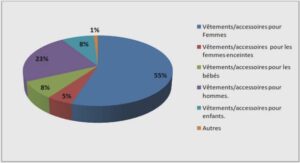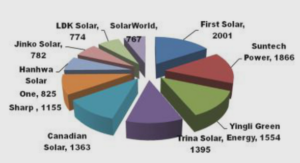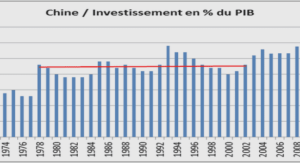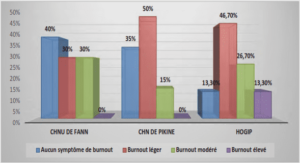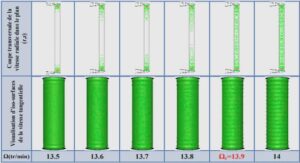Réactions redox du plutonium et de l’antimoine avec des minéraux de fers en milieux anoxique
Plutonium in the environment
Plutonium is the major transuranium actinide in civial and military nuclear waste. Through atmospheric and underground weapons testing (e.g. at the Nevada test site), nuclear accidents (Tchernobyl, Fukushima) and leakage or « controlled release » from storage and processing plants of nuclear material considerable environmental contamination with plutonium has occurred, e.g. at he Savannah River and Hanford (US) sites, in the Lake Karachai region (Mayak, Russia), and in Sellafield (UK)). Due to its high chemical and radio-toxicity, its migration behavior has been intensively studied, e.g. through lysimeter experiments with natural sediments.59-61 Pu is not equally associated with different types of minerals and e.g. after sorption to natural tuff, Pu has been found associated with a manganese oxide andnot with hematite. In other circumstances, Pu was found associated with iron (hydr)oxide colloides,63, 64 through which it underwent colloid-facilitated transport. Processes influencing Pu migration behavior and uptake by living organisms, e.g. complexation and redox reactions of Pu with humic substances, peptides, and proteins, with bacteria and with minerals have been investigated.65-70 Minerals adsorption studies were mostly carried out under oxic conditions, thus limiting the applicability of these results to anoxic, reducing environments.
Plutonium redox chemistry In aqueous systems
Pu exits commonly in four oxidation states: III, IV, V, VI.14 Tri- and tetravalent ions exist hydrated in solution while penta and hexavalent Pu exists in the form of trans-dioxo cations (PuO2 + and PuO2 2+), resulting in effective charges of +4 for Pu(IV), +3.3 for Pu(VI), +3 for Pu(III) and +2.3 for Pu(V). Hydrolysis, complex formation with dissolved ligands and sorption to surfaces are for Pu, a hard Lewis acid, highly electrostatic in nature and the stability of solution complexes and solids follows the order of effective charges. This results in Pu(IV) solids (Pu(OH)4(s) or PuO2(am,hyd)) Introduction 6 being the most stable and least soluble and in Pu(V) complexes and solids being the least stable and most soluble among the four oxidation states.14, 71 The migration of Pu(V) is thus expected to be least impeded by precipitation of a Pu(V) solid or by sorption onto mineral surfaces. As a Pu contamination is thus more likely to migrate as Pu(V) than as Pu(IV), for example, and because Pu(V) is expected to be the dominant oxidation state in aerobic waters, the sorption of Pu(V) to mineral surfaces has been extensively studied under oxic conditions. In a number of cases when Pu(V) was sorbed to iron(III) oxides, reduction to Pu(IV) was observed, even though no obvious reductant was present. This was explained either by the presence of traces of Fe(II) or by the stability of the forming Pu(IV) surface complexes or hydrolysis products. Figure 1.2. Hydrolysis species of Pu(III) (a) and hydrolysis species of Pu(IV) (b) as a function of pH at I = 0 mol/kg. c) Dissolved Pu(IV) in equilibrium with PuO2(am,hyd) as a function of pH at I = 0 m (orange) and I = 0.1 m (green). Introduction 7 Generally, reduction of Pu(V) to Pu(IV) can lead to the immobilization of Pu in a Pu(IV) solid phase and thus retard its migration in the environment. However, Pu(IV) hydrolysis species tend to oligomerize and form intrinsic colloids that can be very stable over long periods of time, are characterized by a solubility about two order of magnitude higher than PuO2(am,hyd) and can be transported, as eigen- or pseudo-colloids, over long distances, thus complicating predictions on Pu concentrations and migration behavior.8, 63, 64, 76, 77 Under reducing acidic conditions Pu(V) is expected to be reduced to Pu(III), not Pu(IV). However, PuO2(am,hyd) is expected to be the solubility controlling solid phase in equilibrium with Pu(III) as Pu(OH)3(s) was found to be unstable and convert unter reducing conditions in the stability field of water into PuO2(s,hyd). pe-pH predominance diagrams are commonly used to visualize changing relative stabilities between solution species or solution species and solids as a function of redox potential and pH. In each region, enclosed by boundary lines that were calculated based on equilibrium constants, a solid phase or solution species will be predominant.78 The first step to establish which equilibria between hydrolysis species of the different oxidation states have to be considered for the calculation of a pe-pH diagram is to calculate the hydrolysis species of Pu as a function of pH (Fig. 1.2). For example, the equilibrium between Pu3+ and PuOH2+ can be expressed by the following equation: Pu3+ + H2O ⇄ PuOH2+ + H+ (1.1) with K = {PuOH2+} {H+ } / {Pu3+}{H2O} (1.2). The equilibrium constant K (eq. 1.2) can be obtained from the DrG value of the reaction that can be calculated if the ΔfG values for all participating species are known as lnK = -ΔrG / RT (1.3) (with R – gas constant (8.314 J/mol K) and T – temperature in K). The pH at which the two species have the same activity, pHeq, is then, if the activity of water is 1, obtained from: logK = log({PuOH2+}/{Pu3+}) – pH, thus pHeq = – logK. In the same way, equations between different redox species can be written, e.g. Pu(OH)3 + + e- + 3 H+ ⇄ Pu3+ + 3 H2O (1.4) and, if {H2O} = 1, pe = logK – log({Pu3+}/{Pu(OH)3 + }) – 3 pH. (1.5) The redox equilibrium between Pu3+ and PuO2(am,hyd) can be expressed as PuO2(am,hyd) + e- + 4 H+ ⇄ Pu3+ + 2 H2O (1.6), thus K = {Pu3+} {H2O}2 / {e- }{H+ }4 (1.7) and pe = logK – log{Pu3+} – 2 log {H2O} – 4 pH (1.8). As shown in eq. 1.8, to plot the dependence of pe over pH as a line delineating the predominance fields of Pu3+ and PuO2(am,hyd) into a pe-pH diagram for Pu, a Pu3+ activity has to be fixed (Fig. 1.3). If, in contrast, one is interested in the activity of Pu3+ in equilibrium with a PuO2(am,hyd) solid phase, pH and pe have to be given as input.Figure 1.3. pe-pH predominance diagram for plutonium at I = 0. Solution species are written in italics, solid phases in bold. Thin lines delineate fields between solution species. The thick blue line delineates the equilibrium between solution Pu3+ and PuO2(am,hyd), [Pu3+] = 5·10-6 M, the thick grey the equilibrium between PuO2+x(s,hyd) and PuO2(am,hyd). Dissolved Pu(IV) concentrations in equilibrium with PuO2(am,hyd) are independent of the redox potential and, at near neutral pH, are below 10-10 M (Fig 1.2c). Under reducing conditions, e.g. pH 7 and pe -4 and I = 0, [Pu3+] would be 5·10-9 M, two orders of magnitude above [Pu(IV)]. With increasing ionic strength the activity of a given Pu3+ concentration in solution decreases rapidly and to be in equilibrium with PuO2(am,hyd) a higher concentration is then necessary. The activity coefficients γj, relating activity and concentration, e.g. {Pu3+} = [Pu3+] γPu3+, can be calculated according to different theories, among them the specific ion interaction theory (SIT) from Bronsted-Guggenheim-Scatchard.79 For Pu3+ in NaCl of a given ionic strength, e.g., γPu3+ can be calculated when the interaction parameter between Pu3+ and Cl- , ε(Pu3+, Cl- ), is known: logγPu3+ = -zPu3+ 2 D + Σ ε(Pu3+,Cl- ) m(Cl- ) (1.9) D = A sqrt(Im) / (1 + Baj·sqrt(Im)) (1.10) In equation 1.9, z is the charge of the ion (+3 in this case), m is the ionic strength in mol/kg, and D is the Debye-Hückel term in which for the SIT theory at 25ºC A = 0.509 and Baj = 1.5.
Materials and methods
Mineral synthesis and characterization
Magnetite, mackinawite and chukanovite were synthesized and characterized as described in chapter 3.2. Hematite (α-Fe2O3) was synthesized similarly to Sorum (1928).82 250 mL of 0.4 M FeCl3 (Fluka, p.a.) were slowly (at a rate of about 5 mL/min) added to 1.5 L of boiling ultrapure water that had been acidified with 3 mL of 1 M HCl (thus being 0.002 M in HCl). After all FeCl3 had been added, the solution was kept boiling for another 3 hours and was then left to cool. The hematite was dialyzed against de-ionized water (Spectra/Por®, MWCO: 6-8000) four one week, changing water daily. Subsequently hematite was washed by centrifugation (3 times in 0.01M NaCl) (Beckman Avanti J-20 centrifuge, with JA 14 rotor), and was finally resuspended in 0.01M NaCl. Thus synthesized hematite was characterized by Powder XRD (Fig. 2.1). Figure 2.1.X-ray diffraction pattern for hematite measured with a step width of 0.02º2θ and step time of 12 s from 10 to 80º2θ. Red lines indicate pattern from reference spectrum (pdf 00-033-0664). Goethite (α-FeOOH) was synthesized similar to sample G in Varanda et al (2002)83, a sample that was characterized in the article with powder XRD as being nanoparticulate goethite and with TEM as containing mainly particles of 60 nm length and 10 nm width (L/W = 6) and a polydispersity < 0.1. In the original synthesis Fe2(SO4)3 x 6 H2O is used as the Fe(III) salt. To 50 mL of a 0.1M Fe2(SO4)3 solution 2.5 M NaOH is added to a radio OH/Fe = 0.35. After aging for 4h at 21°C, Na2CO3 is added to obtain [CO3 2-]/[Fe] = 3.75 and water to attain a final volume of 100 mL. The suspension is then aged for 48h at 40°C and then for 72h at 60°C. After up-scaling (9 times the original amount), the synthesis was performed in the following manner: A 450 mL solution of 0.1 M Fe(III) sulfate (0.09 mol Fe) was prepared from 22.86g of Fe2(SO4)3 x xH2O (Sigma) to which 31.5 ml 1M NaOH (0.0315 mol OH- ) were added and aged for 4h at RT. Subsequently, 250 mL of a solution containing 96.6 g of Na2CO3 x 10 H2O (0.3375 mol Na2CO3) (Labosi, p.a.) were added and 168 mL H2O to a final volume of 900 mL. Aging at 40°C and 60°C was carried out as described above. The resulting solid was Materials and methods 11 washed 4 times with ultrapure water resulting in a suspension pH of 7. Then, the solid was washed another three times with and re-suspended in 10 mM NaCl. The washing was performed by centrifugation at 20°C (2500 rpm, 5 min) (Beckman Avanti J-20 centrifuge, with JA 14 rotor). Thus synthesized goethite was characterized by Powder XRD (Fig. 2.2). Figure 2.2. X-ray diffraction pattern for goethite measured with a step width of 0.04º2θ and step time of 6 s from 10 to 80º2θ. Red lines indicate pattern from reference spectrum (pdf 01-081-0464). Hematite and goethite were also characterized by Mössbauer spectrometry. Dried powders were measured at 300 and 77 K using a conventional constant acceleration transmission spectrometer with a 57Co(Rh) source and a bath cryostat. An α-Fe foil was used as a calibration sample. Spectra were fitted using the MOSFIT84 program. Isomer shifts are quoted with respect to that of α-Fe at 300K. Measurement and fitting were carried out by J.-M. Grenèche, University du Maine, Le Mans. The goethite spectrum at 300 K, composed of a collapsing sextet and paramagnetic doublet, strongly ressembles the spectrum of a nanoparticulate goethite samples published by Gotic and Music (2007)85. At 77 K, the sextet is ressolved. These spectra provide no indication for presence of Fe(II). The hematite spectra equally do indicate presence of Fe(II) and correspond well to the values published for hematite in Fysh and Clark (1983)86. Table 2.1. Moessbauer parameters for hematite and goethite sample δ (mm/s) Γ (mm/s) Δ or EQ (mm/s) Bhf (T) Area (%) goethite, 300K D 0.37 0.55 0.52 33 S 0.31 -0.11 22 67 goethite, 77K S 0.48 -0.21 48.6 100 hematite, 300K S 0.37 -0.21 47.4 100 hematite, 77K S 0.48 -0.20 52.7 100 key: D = doublet, S = sextett, δ = isomer shift, Γ = full width at half maximum, Δ or EQ = quadrupole splitting, Bhf = hyperfine field Before use under anoxic conditions, hematite and goethite suspensions were bubbled for several hours with N2 and were then transferred into first an N2, then Ar glovebox. The mineral suspensions were kept anoxic glovebox atmospheres for several months before they were reacted with plutonium. Even though Moessbauer spectra do not indicate presence of Fe(II), its presence cannot be excluded due to Materials and methods 12 potential Fe(II) contamination in the original Fe(III) salts used for synthesis. In particular at the low pH at which the employed hematite synthesis route takes place, trace Fe(II) might not be oxidized. Detection limit of Fe(II) in by Mössbauer spectrometry is about 1 %. In addition, hematite and goethite were dried before Mössbauer analysis while the minerals used for reaction with plutonium were always suspended and thus less exposed to oxydation by air. Figure 2.3. Mössbauer spectra of goethite (left) and hematite (right) measured at 300 K and 77 K. For preparation of maghemite, magnetite was oxidized using H2O2. 87, 88 For the first batch used for the 40 d Pu experiments this was done in the following manner: To 35 mL of a magnetite suspension (45 g/L) were added 40 mL of H2O2 (30 %) and left to react for 1 h. After 1 h, the solution was decanted and another 40 mL H2O2 were added. The resulting suspension was heated to about 90ºC for 1 h. After cooling, the solid was washed three times with 0.01 M NaCl and finally resuspended in 0.01 M NaCl. For the second batch, used for the 8-months Pu samples, a 45 mL magnetite suspension was reacted 6 times with 50 mL 30 % H2O2 (five times for two hours and once over night) and was kept at about 90ºC for the last three reactions with H2O2. For Moessbuaer spectrometry, the same mistake as for goethite and hematite had been made, that is the powder resulting from oxidation of magnetite was dried in the air and residual Fe(II), if present, got oxidized from oxygen in the air (not shown). When the solid resulting from H2O2 oxidation of magnetite was dissolved in acid to determine spectrophotometrically the Fe(II) content, concentrated HCl as used, thus resulting in reduction of Fe(III) to Fe(II) and not providing reliable information on the Fe(II) content of the maghemite or partially oxidized magnetite. Materials and methods
Sb and Fe total concentration analysis with ICP-MS
Filtered, acidified (HNO3) solutions from Sb mackinawite experiments were diluted to a concentration below 100 ppb Sb and below 10,000 ppm Fe with 2 % in-house double-distilled HNO3. For preparation of calibration standards and sample dilution, acid leached centrifuge tubes were used (leached for one months in an acid bath containing 100 mL HNO3conc and 1 mL HFconc for 5 Litres H2O). Dilution was carried out by weighing sample and dilutant; the resulting volume of the diluted samples was calculated from transferred mass using the density of HNO3 (1.012g/L for 2 % HNO3). Half of the total samples volume consisted of HNO3 that had been spiked with 72Ge, 115In, 9 Be, and 169Tm. Sb, Fe standards used were 10 ppt Sb, 1 ppb Fe for the most diluted and 100 ppb Sb, 10,000 ppm Fe for the most concentrated one. For preparation of the calibration standards, the following solutions were used: For Fe, 1000 ± 4 mg/L TraceCert (Fluka) in 2 % HNO3, for Sb 1.000 g/L in 5 M HCl, d4 20 = 1.08 (Fluka). For Sb and Fe, signals for isotopes 121Sb, 123Sb and 56Fe were acquired. For construction of calibration curves and sample signal analysis, counts for Sb and Fe were corrected according to the spike signals. The spike level for each sample and standard was calculated from the exact amount of spiked HNO3 used, asigning a spike level of 1 to a sample half of whose volume consisted of spiked HNO3. Counts for the spiked elements were then divided through the spike level and were normalized with respect to the 1ppb standard.X being In or Tm. m(X) is the mass of the isotope of X. Given concentrations are the geometric averages of the concentrations found from the two isotopes. Corrected counts for 56Fe were calculated similarly from 9 Be and 72Ge according to: countsFecorr = countsFe·(CountsBenorm·((m(Ge) – m(Be)) – (m(Fe) – m(Be))) / (m(Ge) – m(Be) + CountsTmnorm·((m(Ge) – m(Be)) – (m(Ge) – m(Sb))) / (m(Ge) – m(Be))). The detection limit (blank + 3 standard deviations) for Sb was 1.04·10-7 M. For SLRS-4 (river water reference material for trace metals), the following concentrations were obtained: for Sb 0.026 ± 0.01 ppb, for Fe 95 ± 3 ppb. Certified values are for Sb 0.23 ± 0.04 ppb and for Fe 103 ± 5 ppb. Measurements were carried out using an Agilent 7500ce quadrupole ICP-MS equipped with a hydrogen collision cell using the ChemStation software provided by the manufacturer. Between samples, the sampling needle was washed for two minutes per washing solution first in 5 % HNO3 and then two times in 2 % HNO3.
List of abbreviations |
